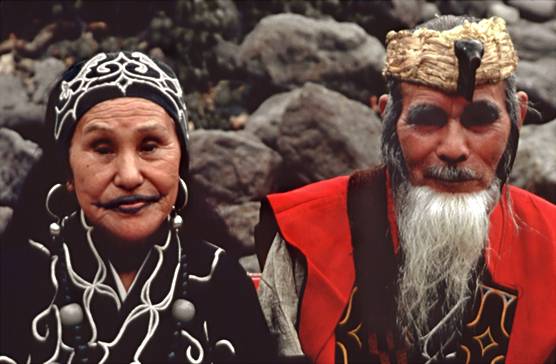Jeez, re-editing my ignore list was a mistake...
as lactose tolerance and skin pigmentation are two areas where European populations tend to separate themselves from non-European ones.
Stop compromising yourself. At least four mutations leading to lactase persistence arose in the world independently from each other.
Europeans have only one of these mutations - lactase persistence is therefore by no means limited just to Europeans, contrary to what you claim.
Agriculture may well make such mutations more desirable, thus decreasing the numbers of people without the mutation, but it would be astonishing that this transformation only occurred in Europe, and not places like China, India, or Meso-America, which all had agricultural and hunter-gatherer societies.
I already wrote that Chinese people (and East Asians in general) have their own mutation causing light skin pigmentation.
Northern Indians share the European mutation. Southern Indians need dark skin for protection from sunburns.
Meso-America also has sunny climate, which means that darker skin is needed, even if there is shortage of vitamin D.
it would still be caused by genetic mutations, not bloody agriculture.
Mr Obvious, you are a genius, thanks.
I was wrong. The spread of genetic resistance to malaria among Central Africans was also caused by a mutation, not by mosquitos, swamps and malaria.
Just like the existence of houses in human societies is caused by laying bricks on top of one another, and not by the need of shelter.
You really like nitpicking.
Domen also doesn't understand cause and effect, as a previous poster mentioned
Wrong - I do understand cause and effect.
On the other hand you and that previous poster do not understand the difference between cause and mechanism.
Mutations arise either in response to environment or randomly. But even if they arise randomly, they never become so widespread randomly.
You cannot explain the increase of lactase persistence from 1/20 (or even less) to over 1/2 by some completely random drift. Selection was a factor.
If you disagree with theories explaining the spread of discussed two mutations that I quoted, then provide your own reasonable explanation.
Agriculture may well make such mutations more desirable, thus decreasing the numbers of people without the mutation
I thought you were going to claim that this mutation has spread from 5% of the population to 75% randomly. Nice that you did not claim so.













 kinda strange how that works...
kinda strange how that works...